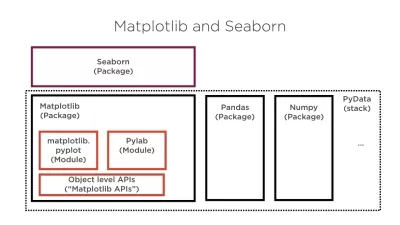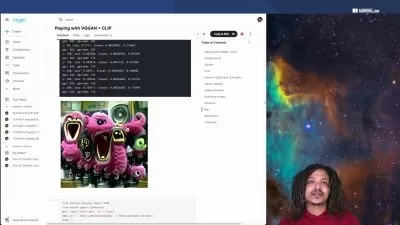Machine Learning in R: Land Use Land Cover Image Analysis
Kate Alison
5:38:27
Description
Learn supervised machine learning for Remote Sensing R & R-Studio, image classification, land use and land cover mapping
What You'll Learn?
- Learn supervised machine learning for image classification using R-programming language in R-Studio
- Learn theoretical background of Machine Learning
- Apply machine learning based algorithms (random forest, SVM) for image classification analysis in R and R-Studio
- Learn R-programming from scratch: R crash course is included that you could start R-programming for machine learning
- Fully understand the basics of Land use and Land Cover (LULC) Mapping based on satellite image classification
- Get an introduction and fully understand to Remote Sensing relevant for LULC mapping
- Pre-process and analyze Remote Sensing images in R
- Learn how to create training and validation data for image classification in QGIS
- Build machine learning based image classification models for LUCL analysis and test their robustness in R
- Implement Machine Learning algorithms, such as Random Forests, SVM in R
- Apply accuracy assessment for Machine Learning based image classification in R
- You'll have a copy of the scripts and step-by-step manuals used in the course for your reference to use in your analysis.
Who is this for?
What You Need to Know?
More details
DescriptionMastering Machine Learning in R and R-Studio: Image Classification for Land Use and Land Cover (LULC) Mapping
Welcome to this unique Udemy course on Machine Learning in R and R-Studio, focusing on image classification for land use and land cover (LULC) mapping!
Why Should Geospatial Analysts (GIS, Remote Sensing) Learn R?
This course is a pioneering offering on Udemy, providing you with the opportunity to acquire highly sought-after R programming skills for Remote Sensing-based Machine Learning analysis in R.
The knowledge you gain in this course will empower you to embark on your own Machine Learning image data analysis in R. With over 2 million R users worldwide, Oracle has solidified R's position as a leading programming language in statistics and data science. The R user base grows by approximately 40% each year, and an increasing number of organizations rely on it for their day-to-day operations. By enrolling in this course today, you are taking a proactive step to future-proof your career!
Course Highlights:
This comprehensive course comprises 7 sections, meticulously covering every aspect of Machine Learning, encompassing both theory and practice. You will:
Gain a solid theoretical foundation in Machine Learning.
Master supervised machine learning techniques for image classification.
Apply machine learning algorithms (such as random forest and SVM) for image classification analysis in R and R-Studio.
Acquire a fundamental understanding of R programming.
Fully grasp the basics of Land Use and Land Cover (LULC) Mapping based on satellite image classification.
Comprehend the fundamentals of Remote Sensing pertinent to LULC mapping.
Learn how to create training and validation datasets for image classification in QGIS.
Build machine learning-based image classification models for LULC analysis and evaluate their robustness in R.
Apply accuracy assessment to Machine Learning-based image classification in R.
No Prior R or Statistics/Machine Learning/R Knowledge Required:
This course begins with a comprehensive introduction to the most essential Machine Learning concepts and techniques. I employ easy-to-follow, hands-on methods to demystify even the most intricate R programming concepts, especially in the context of satellite image analysis.
Throughout the course, you will implement these techniques using real image data sourced from various providers, including Landsat and Sentinel images. As a result, upon completion of this Machine Learning course in R for image classification and LULC analysis, you will possess the skills to work with diverse data streams and data science packages to analyze real data in R.
If this is your initial encounter with R, rest assured. This course serves as a comprehensive introduction to R and R programming.
What Sets This Course Apart?
This course distinguishes itself from other training resources by delivering practical, hands-on solutions in an easy-to-follow manner, aimed at enhancing your GIS and Remote Sensing skills, as well as your proficiency in R. You will be equipped to initiate spatial data analysis for your own projects, earning recognition from future employers for your advanced GIS capabilities, mastery of cutting-edge machine learning algorithms, and R programming proficiency.
Integral to the course are practical exercises. You will receive precise instructions, scripts, and datasets to execute Machine Learning algorithms using R tools.
Join This Course Now and Elevate Your Expertise!
Who this course is for:
- Everyone who would like to learn Data Science Applications in the R & R Studio Environment
- Geographers, Programmers, geologists, biologists, social scientists, or every other expert who deals with GIS maps in their field
Mastering Machine Learning in R and R-Studio: Image Classification for Land Use and Land Cover (LULC) Mapping
Welcome to this unique Udemy course on Machine Learning in R and R-Studio, focusing on image classification for land use and land cover (LULC) mapping!
Why Should Geospatial Analysts (GIS, Remote Sensing) Learn R?
This course is a pioneering offering on Udemy, providing you with the opportunity to acquire highly sought-after R programming skills for Remote Sensing-based Machine Learning analysis in R.
The knowledge you gain in this course will empower you to embark on your own Machine Learning image data analysis in R. With over 2 million R users worldwide, Oracle has solidified R's position as a leading programming language in statistics and data science. The R user base grows by approximately 40% each year, and an increasing number of organizations rely on it for their day-to-day operations. By enrolling in this course today, you are taking a proactive step to future-proof your career!
Course Highlights:
This comprehensive course comprises 7 sections, meticulously covering every aspect of Machine Learning, encompassing both theory and practice. You will:
Gain a solid theoretical foundation in Machine Learning.
Master supervised machine learning techniques for image classification.
Apply machine learning algorithms (such as random forest and SVM) for image classification analysis in R and R-Studio.
Acquire a fundamental understanding of R programming.
Fully grasp the basics of Land Use and Land Cover (LULC) Mapping based on satellite image classification.
Comprehend the fundamentals of Remote Sensing pertinent to LULC mapping.
Learn how to create training and validation datasets for image classification in QGIS.
Build machine learning-based image classification models for LULC analysis and evaluate their robustness in R.
Apply accuracy assessment to Machine Learning-based image classification in R.
No Prior R or Statistics/Machine Learning/R Knowledge Required:
This course begins with a comprehensive introduction to the most essential Machine Learning concepts and techniques. I employ easy-to-follow, hands-on methods to demystify even the most intricate R programming concepts, especially in the context of satellite image analysis.
Throughout the course, you will implement these techniques using real image data sourced from various providers, including Landsat and Sentinel images. As a result, upon completion of this Machine Learning course in R for image classification and LULC analysis, you will possess the skills to work with diverse data streams and data science packages to analyze real data in R.
If this is your initial encounter with R, rest assured. This course serves as a comprehensive introduction to R and R programming.
What Sets This Course Apart?
This course distinguishes itself from other training resources by delivering practical, hands-on solutions in an easy-to-follow manner, aimed at enhancing your GIS and Remote Sensing skills, as well as your proficiency in R. You will be equipped to initiate spatial data analysis for your own projects, earning recognition from future employers for your advanced GIS capabilities, mastery of cutting-edge machine learning algorithms, and R programming proficiency.
Integral to the course are practical exercises. You will receive precise instructions, scripts, and datasets to execute Machine Learning algorithms using R tools.
Join This Course Now and Elevate Your Expertise!
Who this course is for:
- Everyone who would like to learn Data Science Applications in the R & R Studio Environment
- Geographers, Programmers, geologists, biologists, social scientists, or every other expert who deals with GIS maps in their field
User Reviews
Rating
Kate Alison
Instructor's Courses
Udemy
View courses Udemy- language english
- Training sessions 46
- duration 5:38:27
- English subtitles has
- Release Date 2024/10/30









